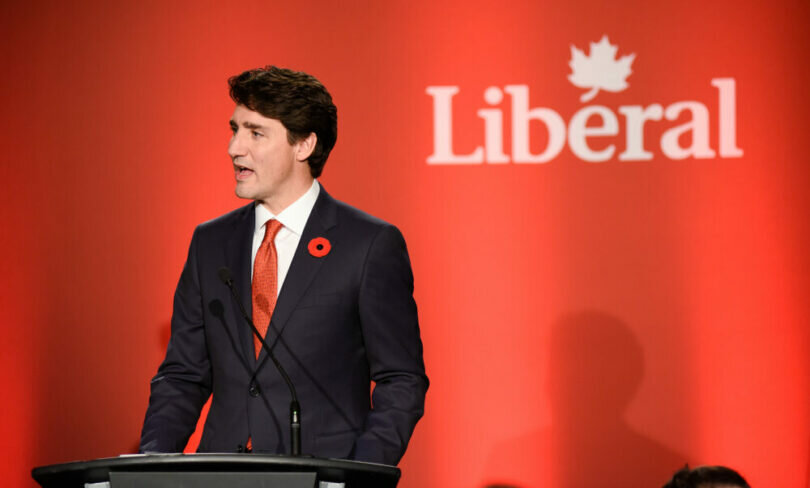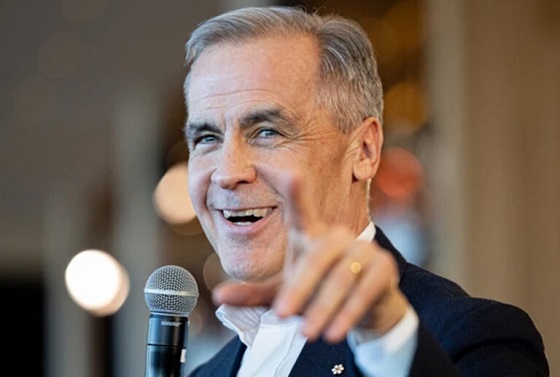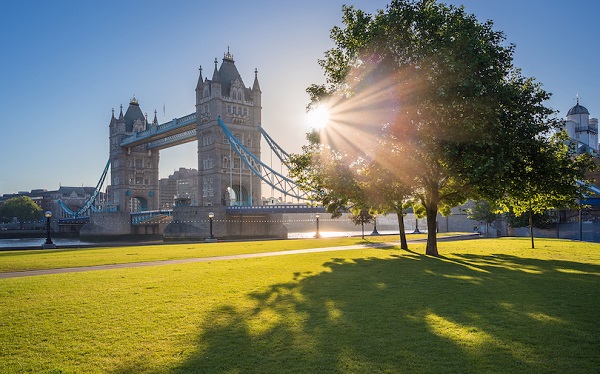Alberta
Alberta and British Columbia set to gain federal ridings from Liberal-held Ontario areas

From LifeSiteNews
Three Liberal-held ridings in Toronto and northern Ontario are set to be given to British Columbia and Alberta this spring, providing a potential benefit to the Conservative Party in the next election.
Alberta and British Columbia are set to gain more federal ridings, which could increase Conservatives’ chances of a federal victory in the next election.
According to a memo published October 10 by Blacklock’s Reporter, the next federal election will see fewer Members of Parliament (MPs) in Toronto and northern Ontario, and more in Okanagan, British Columbia, and suburban Alberta.
“One of our election readiness activities this year relates to electoral boundaries redistribution,” Chief Electoral Officer Stéphane Perrault testified at the House affairs committee.
The changes will come into effect under the Electoral Boundaries Readjustment Act on April 22, 2024, and elections after that date will “take place under the new map.”
The redistribution aims to rebalance the seats proportionately to population growth within the provinces. It will mean a record 343 seats in the House of Commons. Currently, ridings are divided into 122 in Ontario, 78 in Québec, 43 in British Columbia, 37 in Alberta, 14 in Saskatchewan, 14 in Manitoba, 11 in Nova Scotia, 10 in New Brunswick, 7 in Newfoundland and Labrador, 4 in Prince Edward Island and 1 each in the Yukon, Northwest Territories and Nunavut.
Under the new distribution, Toronto will lose the Scarborough-Agincourt riding held by Liberal MP Jean Yip, going from 25 to 24 federal ridings. Last election, all 25 Toronto ridings voted for the Liberals, at 51 percent support, making it the party’s largest popular vote in any major Canadian city.
“It is necessary to move a district to other areas of the Greater Toronto Area that, while equally diverse, are growing much faster than the City of Toronto,” said the Final Report of The Federal Electoral Boundaries Commission For The Province Of Ontario.
“The population of the City of Toronto only grew by 6.9 percent from 2011 to 2021 compared to 11.7 percent for the remainder of the province,” it wrote, arguing that keeping 25 seats in Toronto would “unfairly impact other parts of Ontario.”
Additionally, Northern Ontario is set to lose one of its nine ridings. In 2021, most ridings in Northern Ontario voted Liberal, with the exception of Kenora (Conservative MP Eric Melillo) and Timmins-James Bay (New Democrat MP Charlie Angus).
“We are in a very fragile time for democracy,” MP Angus testified May 8 at the House affairs committee. “We must do our best to reassure citizens that their voice counts and that they are being heard.”
Ontario’s ridings are set to be given to western provinces. British Columbia, which typically votes Liberal or New Democrat, will gain one new seat, Vernon-Lake Country in Okanagan.
On the other hand, Alberta, a historically Conservative province, is set to gain three ridings in Calgary McKnight, Airdrie-Chestermere and Spruce Grove-Leduc.
The Alberta ridings are not the only factor pointing to a Conservative victory next fall. Recently, Canadians have become increasingly fed up of Prime Minister Justin Trudeau’s leadership.
A September poll revealed that Trudeau’s disproval rates have reached a record high of 57 percent. The number should not come as a surprise as the polling also showed that 72 percent of Canadians are concerned with rising costs of living amid Trudeau’s ever-increasing carbon tax and energy regulations.
According to a September 5 report by Statistics Canada, food prices are rising faster than the headline inflation rate – the overall inflation rate in the country – as staple food items are increasing at a rate of 10 to 18 percent year-over-year when compared to the overall inflation rate of 4 percent.
Earlier this year, the Bank of Canada admitted that Trudeau’s federal “climate change” programs, which have been deemed “extreme” by some provincial leaders, are indeed helping to fuel inflation.
Furthermore, as a result of the Trudeau government’s Online News Act, Canadians can no longer access news on Facebook or Instagram as Meta refuses to pay the fees mandated by the act.
On the other hand, Conservative Party leader Poilievre has openly condemned the Online News Act, comparing it with George Orwell’s dystopian novel “1984.”
Furthermore, Poilievre has repeatedly promised Canadians that he will axe the carbon tax and restore the economy if elected prime minister.
Poilievre, however, is not without his own host of issues in the eyes of social conservatives.
While Trudeau came out to condemn the September 20 Million Person March against LGBT indoctrination in schools, Poilievre initially failed to support the immensely popular pro-family effort, and even went as far as having his office tell his caucus to refrain from making any statements about the movement.
Poilievre did eventually break his silence on the matter, slamming Trudeau for his condemnation of concerned parents and encouraging the federal government to leave LGBT discussions to families and not the education system.
Alberta
Red Deer Justice Centre Grand Opening: Building access to justice for Albertans

The new Red Deer Justice Centre will help Albertans resolve their legal matters faster.
Albertans deserve to have access to a fair, accessible and transparent justice system. Modernizing Alberta’s courthouse infrastructure will help make sure Alberta’s justice system runs efficiently and meets the needs of the province’s growing population.
Alberta’s government has invested $191 million to build the new Red Deer Justice Centre, increasing the number of courtrooms from eight to 12, allowing more cases to be heard at one time.
“Modern, accessible courthouses and streamlined services not only strengthen our justice
system – they build safer, stronger communities across the province. Investing in the new Red Deer Justice Centre is vital to helping our justice system operate more efficiently, and will give people in Red Deer and across central Alberta better access to justice.”

Government of Alberta and Judiciary representatives with special guests at the Red Deer Justice Centre plaque unveiling event April 22, 2025.
On March 3, all court services in Red Deer began operating out of the new justice centre. The new justice centre has 12 courtrooms fully built and equipped with video-conference equipment to allow witnesses to attend remotely if they cannot travel, and vulnerable witnesses to testify from outside the courtroom.
The new justice centre also has spaces for people taking alternative approaches to the traditional courtroom trial process, with the three new suites for judicial dispute resolution services, a specific suite for other dispute resolution services, such as family mediation and civil mediation, and a new Indigenous courtroom with dedicated venting for smudging purposes.
“We are very excited about this new courthouse for central Alberta. Investing in the places where people seek justice shows respect for the rights of all Albertans. The Red Deer Justice Centre fills a significant infrastructure need for this rapidly growing part of the province. It is also an important symbol of the rule of law, meaning that none of us are above the law, and there is an independent judiciary to decide disputes. This is essential for a healthy functioning democracy.”
“Public safety and access to justice go hand in hand. With this investment in the new Red Deer Justice Centre, Alberta’s government is ensuring that communities are safer, legal matters are resolved more efficiently and all Albertans get the support they need.”
“This state-of-the-art facility will serve the people of Red Deer and surrounding communities for generations. Our team at Infrastructure is incredibly proud of the work done to plan, design and build this project. I want to thank everyone, at all levels, who helped make this project a reality.”
Budget 2025 is meeting the challenge faced by Alberta with continued investments in education and health, lower taxes for families and a focus on the economy.

Quick facts
- The new Red Deer Justice Centre is 312,000 sq ft (29,000 m2). (The old courthouse is 98,780 sq ft (9,177 m2)).
- The approved project funding for the Red Deer Justice Centre is about $191 million.
Alberta
Made in Alberta! Province makes it easier to support local products with Buy Local program

Show your Alberta side. Buy Local. |
When the going gets tough, Albertans stick together. That’s why Alberta’s government is launching a new campaign to benefit hard-working Albertans.
Global uncertainty is threatening the livelihoods of hard-working Alberta farmers, ranchers, processors and their families. The ‘Buy Local’ campaign, recently launched by Alberta’s government, encourages consumers to eat, drink and buy local to show our unified support for the province’s agriculture and food industry.
The government’s ‘Buy Local’ campaign encourages consumers to buy products from Alberta’s hard-working farmers, ranchers and food processors that produce safe, nutritious food for Albertans, Canadians and the world.
“It’s time to let these hard-working Albertans know we have their back. Now, more than ever, we need to shop local and buy made-in-Alberta products. The next time you are grocery shopping or go out for dinner or a drink with your friends or family, support local to demonstrate your Alberta pride. We are pleased tariffs don’t impact the ag industry right now and will keep advocating for our ag industry.”
Alberta’s government supports consumer choice. We are providing tools to help folks easily identify Alberta- and Canadian-made foods and products. Choosing local products keeps Albertans’ hard-earned dollars in our province. Whether it is farm-fresh vegetables, potatoes, honey, craft beer, frozen food or our world-renowned beef, Alberta has an abundance of fresh foods produced right on our doorstep.
Quick facts
- This summer, Albertans can support local at more than 150 farmers’ markets across the province and meet the folks who make, bake and grow our food.
- In March 2023, the Alberta government launched the ‘Made in Alberta’ voluntary food and beverage labelling program to support local agriculture and food sectors.
- Through direct connections with processors, the program has created the momentum to continue expanding consumer awareness about the ‘Made in Alberta’ label to help shoppers quickly identify foods and beverages produced in our province.
- Made in Alberta product catalogue website
Related information
-

 Business2 days ago
Business2 days agoChinese firm unveils palm-based biometric ID payments, sparking fresh privacy concerns
-

 Business1 day ago
Business1 day agoIs Government Inflation Reporting Accurate?
-

 2025 Federal Election2 days ago
2025 Federal Election2 days agoConservatives promise to ban firing of Canadian federal workers based on COVID jab status
-

 2025 Federal Election1 day ago
2025 Federal Election1 day agoCarney’s Hidden Climate Finance Agenda
-

 Environment2 days ago
Environment2 days agoExperiments to dim sunlight will soon be approved by UK government: report
-

 Censorship Industrial Complex2 days ago
Censorship Industrial Complex2 days agoIs free speech over in the UK? Government censorship reaches frightening new levels
-

 International2 days ago
International2 days agoPope Francis Got Canadian History Wrong
-

 2025 Federal Election1 day ago
2025 Federal Election1 day agoWhen it comes to pipelines, Carney’s words flow both ways





